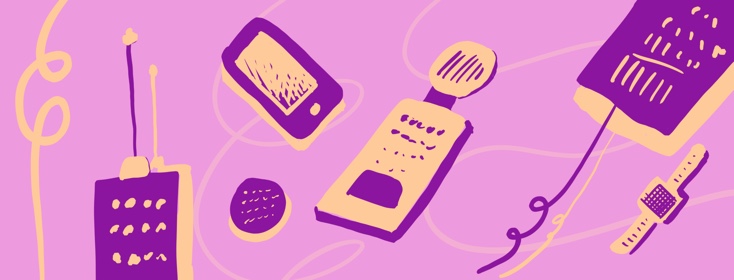Asthma Gadgets
It's no secret that we live in an age where people like gadgets, the kind that are both electrical and non electrical. I'm sure many of you would agree with me that this can be both a blessing and a curse on a number of different levels.
With advancements in technology over the years comes advancements in medical care and treatment. In this day and age there are many many gadgets that are both digital and non digital out there that can help track your asthma and assist in managing this disease we all have. It can get a bit overwhelming especially to a newly diagnosed asthmatic, trying to figure out what all of these she different devices and monitors are and what they can (& can’t do). I wanted to talk briefly about some of these gadgets to hopefully ease any confusion.
Peak flow meters
Peak flow meters can be one of the most useful tools an asthmatic has to monitor their disease. When tracked properly and consistently, peak flow can give you clues to how your asthma is doing. A peak flow meter does just that. It measures your peak flow. Peak flow is a measurement of the maximum rate of air flow out of the lungs during forced exhalation (blowing out hard & fast).
At times you might notice your peak flow starting to trend downward even before you start to feel asthma symptoms. These meters are completely effort and technique dependent so you will want to make sure you are performing the maneuver correctly. Peak flow meters can be purchased online, from most pharmacies and sometimes doctors offices will have them to give to asthma patients.
Digital FEV1 meters
FEV1 stands for “Forced Expiratory Volume in the first second.” This means the volume of air that can be forced out in one second after taking a deep breath. Chances are you have done this maneuver during lung function testing. It is common for people with obstructive lung diseases, such as asthma to have this number reduced.
Like peak flow, this is another handy measurement you can use to track your asthma. The drawback to this gadget is that they are expensive, much more than a standard peak flow meter and are also effort & technique dependent.
Pulse oximeters
Pulse oximeters measure the amount of oxygen in your blood as well as heart rate. While pulse ox’s can be a handy little tool, it is important to know that asthmatics are generally good oxygen compensators which means you could be in the middle of a bad flare up & have completely normal oxygen levels. Make sure to always go off of how you feel over what numbers you see. Symptoms trump numbers!
Cell phone apps
There are many apps out there for iOS and android platforms that can help track asthma. Some have places to track things including peak flow readings, medication usage, symptoms and can make graphs so you can see any trends etc.
Inhaler trackers
These trackers have come out in more recent years and most are pretty amazing. Most are still in the beta testing phase but there are already some that are out on the market. These devices attach to your inhaler and track when you use your inhaler, where you are when you use it (GPS enabled), and can all be sent via Bluetooth to a computer and share info with your doctor and yourself for your records. It's great for tracking trends in medication usage.
Spacers
Spacers are a must for the vast majority asthmatics. Inhaler technique is a tricky skill to master and a spacer helps out tremendously. Keep in mind that spacers are meant for metered dose inhalers, not dry powder or respimat ones. Spacers help the medicine get deeper into your lungs vs the vast majority of it hitting the back of your throat.
Wearable trackers
While I haven't seen any of these in person yet, I have read articles and talked with developers to learn about wearable asthma trackers. These could be an absolute game changer to the asthma world. The trackers are worn and can obtain real time data including breath sounds, heart rate and the list goes on. The data could then be transmitted directly to your computer &/or your doctor for interpretation.
I have only scratched the surface of the world of asthma gadgets, you can see there are some pretty neat and very necessary ones to help track and help manage our disease. I can only imagine in even 5 years time how many more gadgets come out on the market and ones that are already available improved.
What's your favorite asthma gadget?

Join the conversation